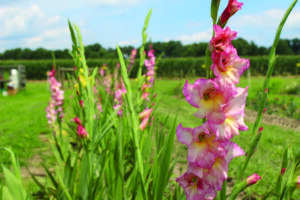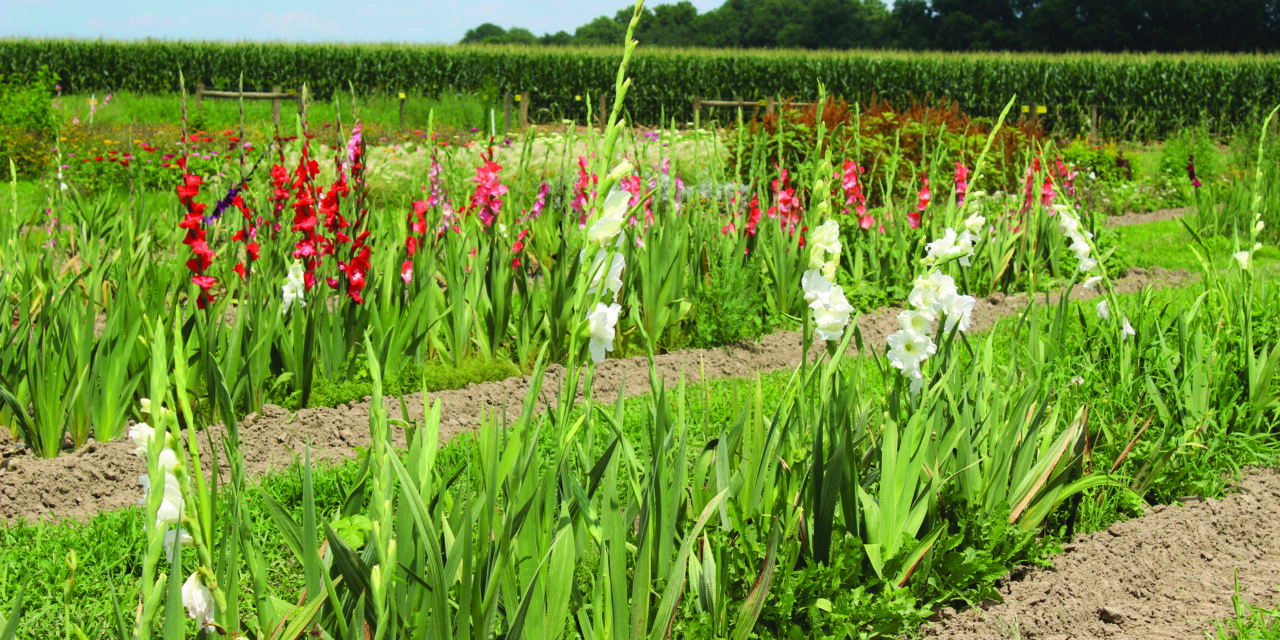
With seven 50-foot rows of gladiolus at Katelin Frase’s Vintage Flower Farm, cut flower seekers have a lot to chose from. Frase said she selects varieties for color and bloom type to offer a lot of options. “It’s based on personal preference, as most flowers are. I like to get a lot of varieties our there and let them decide.” (Photo by Sean Clougherty)
Going back to Greek mythology, gladiolus has a rich history.
Its name comes from the Latin word “gladius” meaning sword, as it’s tall stems and flowers blooming from the bottom up take the shape of a gladiator’s weapon.
Thus gladiolus has been associated as a symbol of strength, healing moral character, honor, intelligence and victory.
In the early 1900s, hybridizers focused their attention on the plant leading to the American Gladiolus Society forming to promote the flower. Then, decades later, it picked up the stigma of a “funeral flower” as florists found it cheap and readily available.
That’s given them a love-‘em-or-hate-‘em dichotomy among gardeners and flower fanatics, said Katelin Frase of Vintage Flower Farms, a cut flower farm near Preston, but she’s firmly on the love ‘em side.
“I put them in all my arrangements,” she said. “I think they’re beautiful.”
With seven 50-foot rows on the farm, she and flower seekers have a lot to chose from. Frase said she selects varieties for color and bloom type to offer a lot of options.
“It’s based on personal preference, as most flowers are,” Frase, who launched the farm operation with husband Eric in 2022, said. “I like to get a lot of varieties out there and let them decide.”
For her, gladiolus’ bring bold color, height and structure to an arrangement.
The sword-shaped flowering plants can reach between 2-5 feet in height. Their showy funnel-shaped blooms also range in size — from less than 3 inches to more than 5 inches in diameter.
Extra appeal of the flower for Frase came when she found out her farm, focused on heirloom varieties in general, was at one time long ago a gladiolus farm.
“Neighbors told us about it after we were here. We’re all about the backstory,” she said. “They are a vintage flower. It’s been grown here for centuries. We’re just carrying on the history.”
A harsh winter can do in a gladiolus bulb — technically, it’s a corm — so Frase digs them up for overwinter storage and plants them again the following year, successionally to spread out the bloom period.
Older corms may produce two or three cuttable stems in a season, while first-year corms may just produce one.
She said this year, she hopes to have gladiolus blooms through August for the those who love them and even those who may be coming around to like them.






